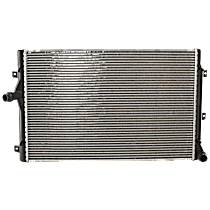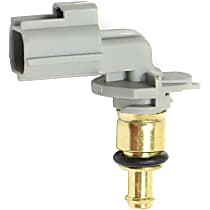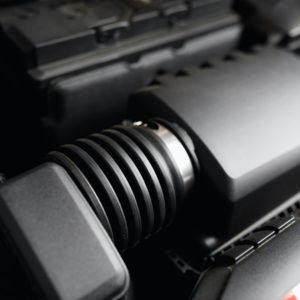A vehicle’s engine accumulates heat as it operates. Engine coolant is circulated within the engine to absorb heat. With the help of the radiator and the rest of the engine cooling system, that heat is dispersed into the atmosphere. The radiator is referred to by engineers as a “heat exchanger.” The cooling system maintains the engine’s optimal operating temperature by keeping it at optimum temperature – the engine doesn’t need to be too hot, for obvious reasons, but it doesn’t need to run too cold either. As peculiar as it may seem, running too hot OR too cold will both cause engine damage. Running too cold causes sludge buildup within the engine, which can eventually starve the engine of oil, effectively destroying it. Running too hot can kill an engine very quickly.
As peculiar as it may seem, running too hot or too cold will both cause engine damage.
– Richard McCuistian, ASE Certified Master Automobile Technician
The P0115 code indicates that there is a potential issue with the sensor that monitors the engine coolant temperature. Find out more about this trouble code with this informative guide.

What Does the P0115 Code Mean?
Diagnostic trouble code (DTC) P0115 stands for “Engine Coolant Temperature Sensor Circuit.” This code sets when the powertrain control module (PCM) detects erratic or irrational input signals coming from the engine coolant temperature (ECT) sensor circuit. The code may also register if the PCM detects an abnormally low or high voltage signal from the engine coolant temperature sensor circuit. The ‘1’ portion of the code points to sensor # 1 in vehicles with two coolant temperature sensors.

The engine coolant temperature sensor measures the temperature of the engine coolant. This two-wire sensor is a thermistor that changes resistance with temperature. One wire carries the 5V reference signal from the PCM and the other is the ground wire.
As the temperature of the engine coolant changes, the sensor’s resistance changes on its ground signal to the PCM. If the engine is cold, the sensor’s resistance is high, but if the engine is warm, the resistance is low.
The PCM uses the data from the engine coolant temperature sensor to control the air-fuel ratio, ignition spark timing, cooling fan operation, and other components of the emissions control system.
If you’re planning to troubleshoot P0115 yourself, you can find more useful information in our technical discussion about how the engine coolant temperature sensor can trigger OBD codes.

Note: The definition of code P0115 may be different depending on the vehicle manufacturer. Consult the appropriate repair manual or repair database for the exact code definition.
What are the Possible Causes of the P0115 Code?
DTCs, such as the P0115 code, have a number of possible causes. This is mainly due to the fact that DTCs themselves can only point to the nature and location of the potential issue and not the main cause itself. Listed below are some of the possible reasons why the P0115 code sets:
- Faulty ECT sensor
- ECT sensor return circuit is open
- ECT sensor connector is damaged (check pins for damage and/or moisture)
- ECT sensor signal circuit is open or shorted to voltage
- PCM has failed
- Engine overheating
- Low coolant level
- Air in the cooling system
What are the Common Symptoms of the P0115 Code?
When there is a potential issue with sensors or sensor circuits, the vehicle’s computer system stores information about the issue as a diagnostic trouble code. The computer may also send a signal to turn the malfunction indicator lamp (MIL) on. In some cases, an activated MIL is the only indicator that there is a problem.
However, you may observe other signs if you encounter other DTCs. If you’re dealing with the P0115 code, you may notice the following symptoms:
- Malfunction indicator lamp (MIL) or check engine light illuminated
- Engine may be hard starting
- Poor fuel economy
- Engine running extremely rich or lean
- Engine dying
- Engine overheating
- In many cases, no unusual symptoms may be noticed

How to Diagnose the P0115 Code
In order to fix DTCs, such as the P0115 code, you’ll need to conduct a thorough diagnosis. Diagnostic trouble codes can only point you to the nature and the location of the potential problem, not the issue itself. For you to formulate an effective and long-term solution, you’ll have to determine the exact root cause.
There are a lot of sources to help you troubleshoot DTCs. Vehicle-specific repair manuals and databases are the best sources because they have detailed repair instructions as well as helpful diagrams and illustrations. Online materials such as how-to videos, blogs, and online training tools are also quite helpful.
How to Fix the P0115 Code
Fixing DTCs takes time and effort. First, you have to determine what triggered the code in the first place. Doing this requires you to narrow down the list of possible causes until you reach the main issue.
Second, you have to note that vehicles are built differently so terminology, DTC setting conditions, and repair instructions will differ depending on the make. For example, the P0115 on Nissan vehicles puts the engine in a fail-safe mode while the P0115 ion Toyota vehicles doesn’t.
Repair manuals can definitely help the seasoned DIYer to fix the issue. However, if you’re not confident in your DTC repair skills, it’s best to leave the job to a certified mechanic and/or technician.
Where to Get a New Engine Coolant Temperature Sensor for Your Vehicle
A malfunctioning engine coolant temperature sensor can trigger an OBD code and cause various engine issues that are hard and costly to fix. It usually starts with the engine overheating, so don’t think twice about replacing it.
Thankfully, it’s easy to find a replacement engine coolant temperature sensor with the help of CarParts.com. Use our vehicle selector and filters to view top-notch engine coolant temperature sensors that fit your ride and needs.
If you want to fix your ride as soon as possible, know that we have warehouses strategically located across the country. That means you won’t have to wait weeks for your order.
Your ECT sensor is a crucial engine component, and we make sure that we’re giving you the best possible replacements for your ride. That’s why we source our parts from top aftermarket brands in the country. They’re rigorously tested during manufacturing, so you can be sure they’ll last a long time.
Don’t wait for your car to break down before you have your ECT sensor replaced. Order what you need today!
Products Mentioned in this Guide
Any information provided on this Website is for informational purposes only and is not intended to replace consultation with a professional mechanic. The accuracy and timeliness of the information may change from the time of publication.


 Radiator
Radiator
 Coolant Temperature Sensor
Coolant Temperature Sensor

















good and informative
Hi Kenny,
Thank you for the feedback! We’re glad you found this article to be helpful.